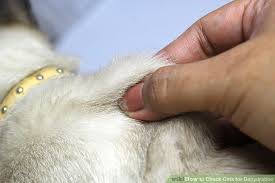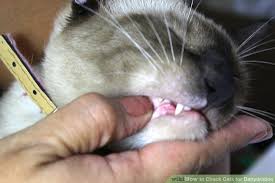Like you, your cat’s body is made primarily of water. Proper hydration plays a critical role in all of your cat’s bodily functions including circulation, digestion, and waste removal. Because of this, dehydration can be very dangerous and even fatal if not recognized and treated immediately. Cats are notoriously skilled at hiding health problems so it is important for you to pay attention to your cat’s drinking habits, litter box output and overall health to ensure they are getting enough water.
Paying attention to whether your cat drinks when they are walking around your home or how much water is gone when you refresh their bowl can go a long way in discovering a problem before it gets out of hand. But it can be hard to tell whether your cat is actually dehydrated simply by their water intake.
To know for sure, check for these signs: 
Decreased skin elasticity: Cat’s skin elasticity is one of the easiest ways to determine whether or not they are dehydrated. Simply pull up some skin at the scruff of their neck and release it. The skin of a healthy and well-hydrated cat will bounce back to normal quickly, while the skin of a dehydrated cat will stay in a stiff peak for several seconds before slowly receding. Note: This test may not be accurate if your cat is overweight or very thin.
Sticky Gums: Dry, tacky gums can be a sign of dehydration. If a cat’s gums are moist and wet to the touch, then they’re more likely to be well hydrated.
Depression or Lethargy: Check whether your cat seems especially sleepy or lazy. Are they less likely to greet you when you come home? Are they less playful than usual? Pay attention to these changes in behavior.
Loss of Appetite: When a cat won’t eat, it is often an immediate signal that something is wrong, even if it’s not dehydration. If your cat refuses to eat for more than 24 hours, it’s time to go to the vet.
Vomiting or Diarrhea: Though not signs of dehydration itself, a cat that is vomiting or that has diarrhea will quickly become dehydrated and depleted of key nutrients.
Sunken Eyes: A dehydrated cat might appear sullen or drowsy, with sunken eyes or eyes that look somewhat “dull.”
Elevated Heart Rate: Take a pet first aid course, or at your next vet visit ask your vet or clinic technician to show you how to check and measure your cat’s heart and/or pulse rate so you know whether it is higher or lower than normal.
 Slow capillary refill: Bad circulation can indicate dehydration. You can check this by pulling back your cat’s top lip and pressing the flat of your finger against their gums for a couple seconds. You’ll see a white mark when you remove your finger. In a healthy and well-hydrated cat the area will turn pink again within 1-2 seconds.
Slow capillary refill: Bad circulation can indicate dehydration. You can check this by pulling back your cat’s top lip and pressing the flat of your finger against their gums for a couple seconds. You’ll see a white mark when you remove your finger. In a healthy and well-hydrated cat the area will turn pink again within 1-2 seconds.
Panting: Cats pant as a way to regulate their body temperature since they lack sweat glands. Though intended to ward off the dangers of overheating, panting can cause its own health risk as moisture is lost through cat’s mouths.
Less Urination: The litter box is also a big indicator of your cat’s health, which is one major reason I recommend using scoopable litter. It is normal for cats to urinate 2-3 times per day. It is easy to note changes in how many times per day your cat urinates and in the size of urine balls with this type of litter. Also remember that a cat that isn’t peeing might not be able to, which can be the sign of a fatal urethral obstruction.
If you notice any of the above signs, contact your vet immediately to create a plan together to get your cat back to optimal health. Check out our next post about how to get your cat to drink more water.
Passionately Pets has been a trusted pet care provider in Northern Virginia since 2007. We proudly provide dog walking, pet sitting and overnight services for dogs, cats and other companion animals in Arlington, Alexandria, Annandale and Falls Church. Visit our website, www.passionatelypets.com, to request a consultation or more information. For more pet filled content, follow us on Instagram and like us on Facebook @passionatelypets.





Leave a Reply